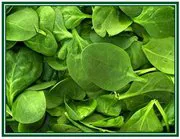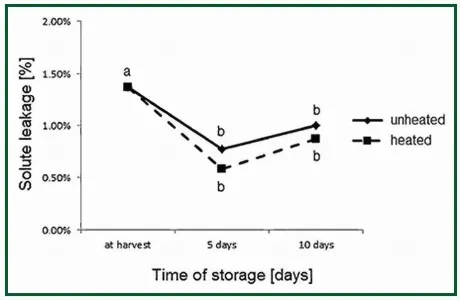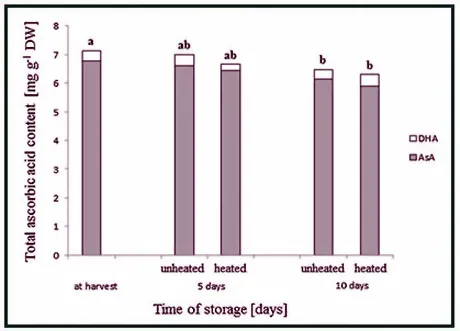 Recently, several studies have demonstrated that a heat shock by using hot water washing at temperature ranging from 37 to 55 °C for a treatment duration from 30 sec to 3 minutes can improve the postharvest quality of spinach and rocket leaves. It has been shown that the heat treatments delay the leaf yellowing that is the major cause of quality loss during the shelf-life, which varies from 5 to 10 days according to the quality of raw material at harvest, postharvest treatments and storage conditions.
Recently, several studies have demonstrated that a heat shock by using hot water washing at temperature ranging from 37 to 55 °C for a treatment duration from 30 sec to 3 minutes can improve the postharvest quality of spinach and rocket leaves. It has been shown that the heat treatments delay the leaf yellowing that is the major cause of quality loss during the shelf-life, which varies from 5 to 10 days according to the quality of raw material at harvest, postharvest treatments and storage conditions.UK scientists of Harper Adams University (Newport, Stropshire TF10 8NB) carried out a study on spinach 1) to optimize the water temperature and the duration of hot water postharvest treatment and 2) to determine the effects of the heat treatment set previously on the shelf-life and on the biochemical response of spinach leaves.
For the first part of the study, spinach (Spinacia oleracea L.) cultivar ‘Toucan’ was used, the leaves were subjected to hot water (40, 45 or 50 °C) treatment for 0, 30, 60 or 120 seconds by using a water bath with distilled water and stainless steel baskets, subsequently leaves were washed with cold water at 4°C for 120 sec, dried, packaged and stored under dark at 4°C for 10 days. Analyzing the results, the scientists established that the maximum hot water temperature and duration before spinach was damaged was 45°C for 60 seconds.
For the second part of the study, spinach leaves were subjected to hot water treatment at 45°C for 0 seconds (unheated, control) or 60 seconds by using a water bath with distilled water and stainless steel baskets, subsequently leaves were washed with cold water at 4°C for 120 sec, dried, packaged and stored under dark at 4°C for 10 days. Comparing heated leaves, treated immediately after harvest, with unheated leaves, the scientists found that the heat treatment accelerated the leaf senescence during storage at 4°C. Heated leaves were significantly lighter and more yellow than unheated leaves (Table 1).
Table 1. Effect of hot water applied at 45°C for 0 sec (unheated, control) or 60 sec (heated) on leaf color changes during the storage of spinach leaves at 4°C for 10 days. Click here to enlarge.

The hot water treatment did not increase the shelf-life of spinach, prolong tissue quality (Figure 1) or either maintain or increase the total ascorbic acid content (Figure 2). This study has showed that hot water treatments have limited commercial application for quality improvement of spinach leaves.
Figure 1. Effect of hot water applied at 45°C for 0 sec (unheated, control) or 60 sec (heated) on solute leakage in spinach leaves after 5 and 10 days of storage at 4°C.

Figure 2. Effect of hot water applied at 45°C for 0 sec (unheated, control) or 60 sec (heated) on total ascorbic acid (AsA, ascorbic acid + DHA, dehydroascorbic acid) in spinach leaves after 5 and 10 days of storage at 4°C.

Source: Glowacz M., Mogren L.M., Reade J.P.H., Cobb A.H., Monaghan J.M., "Can hot water treatments enhance or maintain postharvest quality of spinach leaves?", Postharvest Biology and Technology, 2013, 81: 23-28. Further info: http://www.sciencedirect.com/science/article/pii/S0925521413000392
